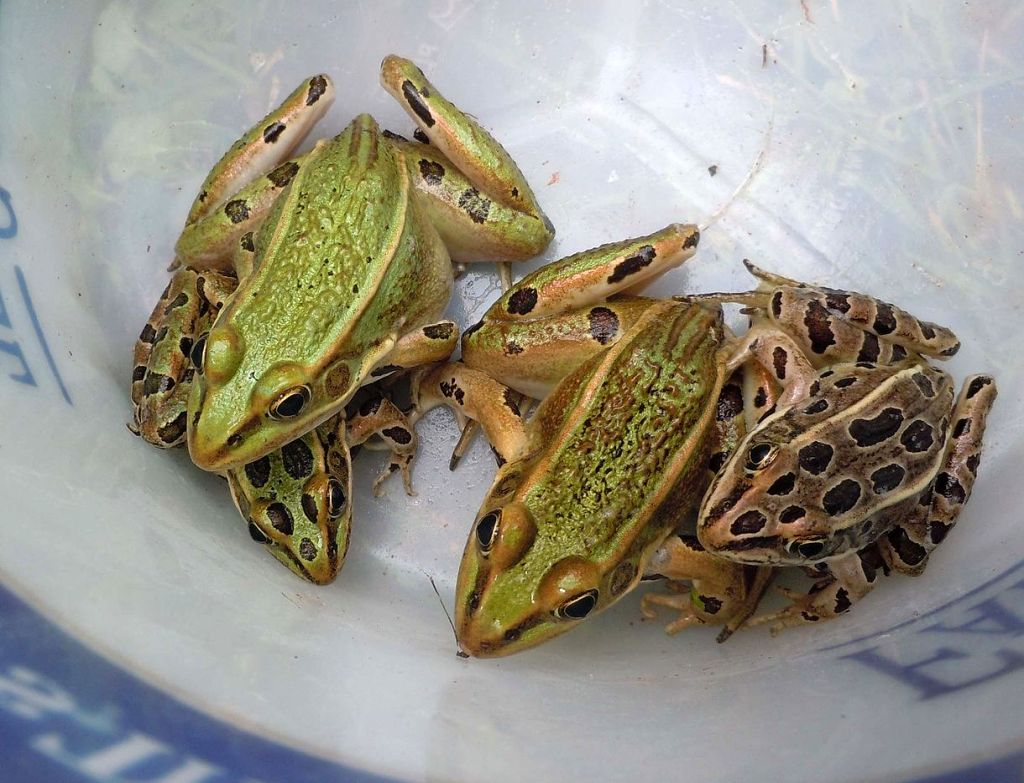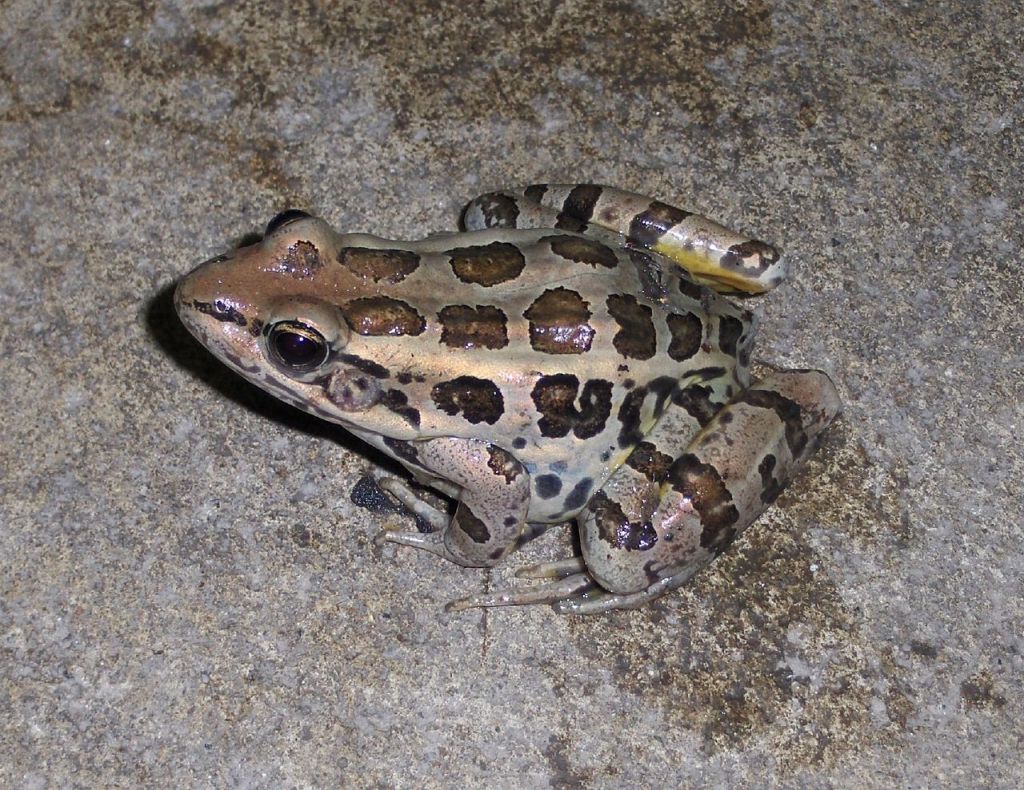
22 September 2020
Pretty soon it’ll be too cold for frogs but right now we still have a chance to see these two in Pennsylvania. Though similar it’s useful to know the difference because one is mildly poisonous.
Northern leopard frogs (Lithobates pipiens), at left above, are harmless and sometimes green. Don’t rely on their green color for identification though because some are plain brown. All four below are northern leopard frogs from the same place in Minnesota. Notice that the spots on their backs are irregular circles and somewhat scattered even on the brown one.

Pickerel frogs (Lithobates palustris) are mildly poisonous. When frightened they excrete a poison from their skin that’s toxic to predators and mildly irritating to human skin. To identify them, notice the chocolate brown blob-like rectangles arranged in two rows between the two folds on their backs (dorsolateral folds).

The Pickerel frogs can also be distinguished by the bright yellow or yellow-orange color on the inside concealed surface of the thigh. Leopard frogs are white in the same area.
— BioKids article at Univ of Michigan
Here’s a live pickerel frog showing off his spots.
The Pickerel Frog shows off its striking pattern. If it’s cover gets blown, plan B is the poison that it packs in it’s skin. Mildly irritating to people, distasteful to predators, they are the only native poisonous frog in the USA. pic.twitter.com/GN2HdltcKc
— incidental naturalist (@IncNaturalist) September 15, 2020
He’s the one that’s poisonous.
p.s. A note on Poisonous versus Venomous:
- Poison is passive, just used as a defense. You have to ingest or touch a poisonous substance to be harmed by it.
- Venom is active, injected into you by the animal that carries it. It’s used as both offense to capture prey and defense.
(photos from Wikimedia Commons, click on the images to see the originals)